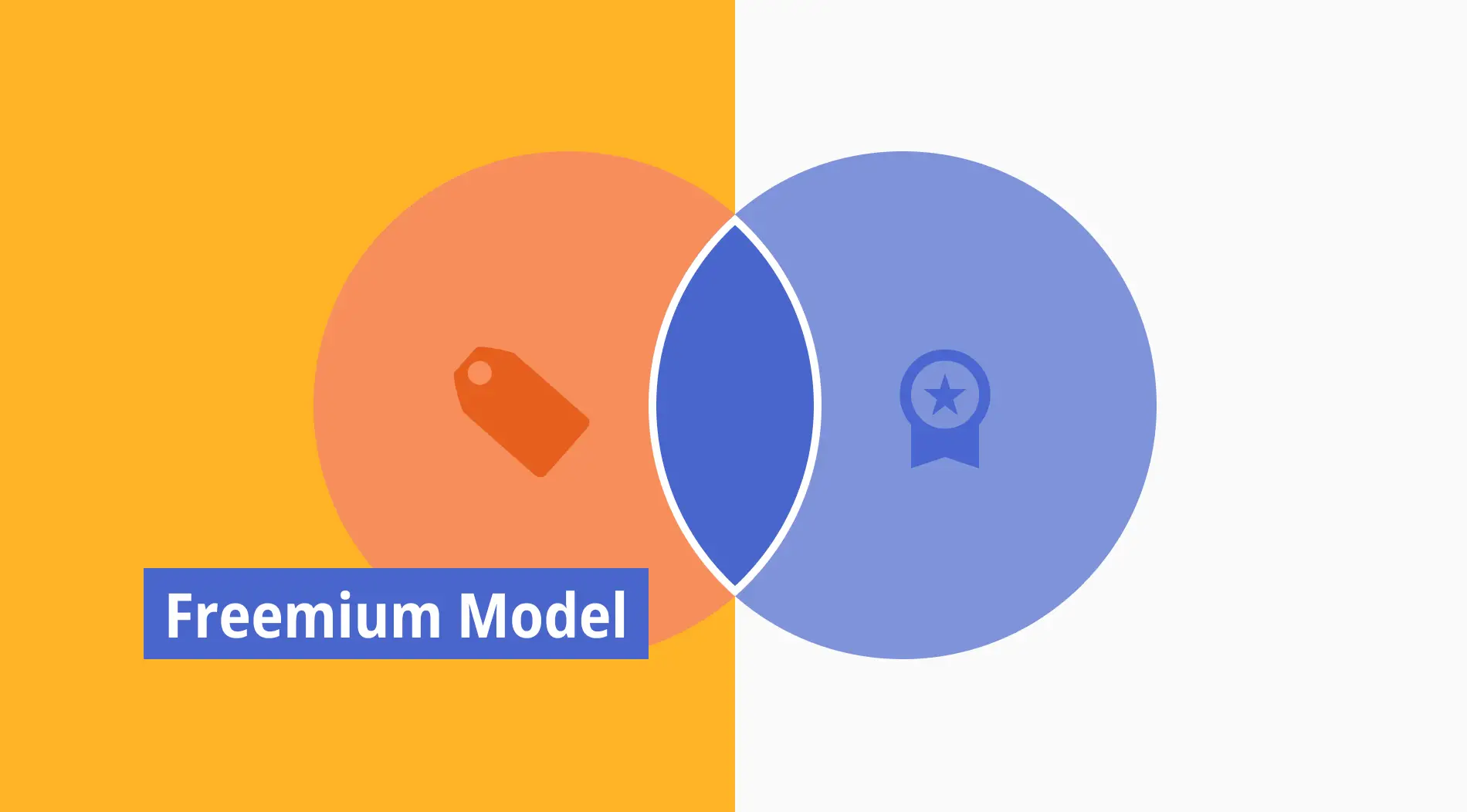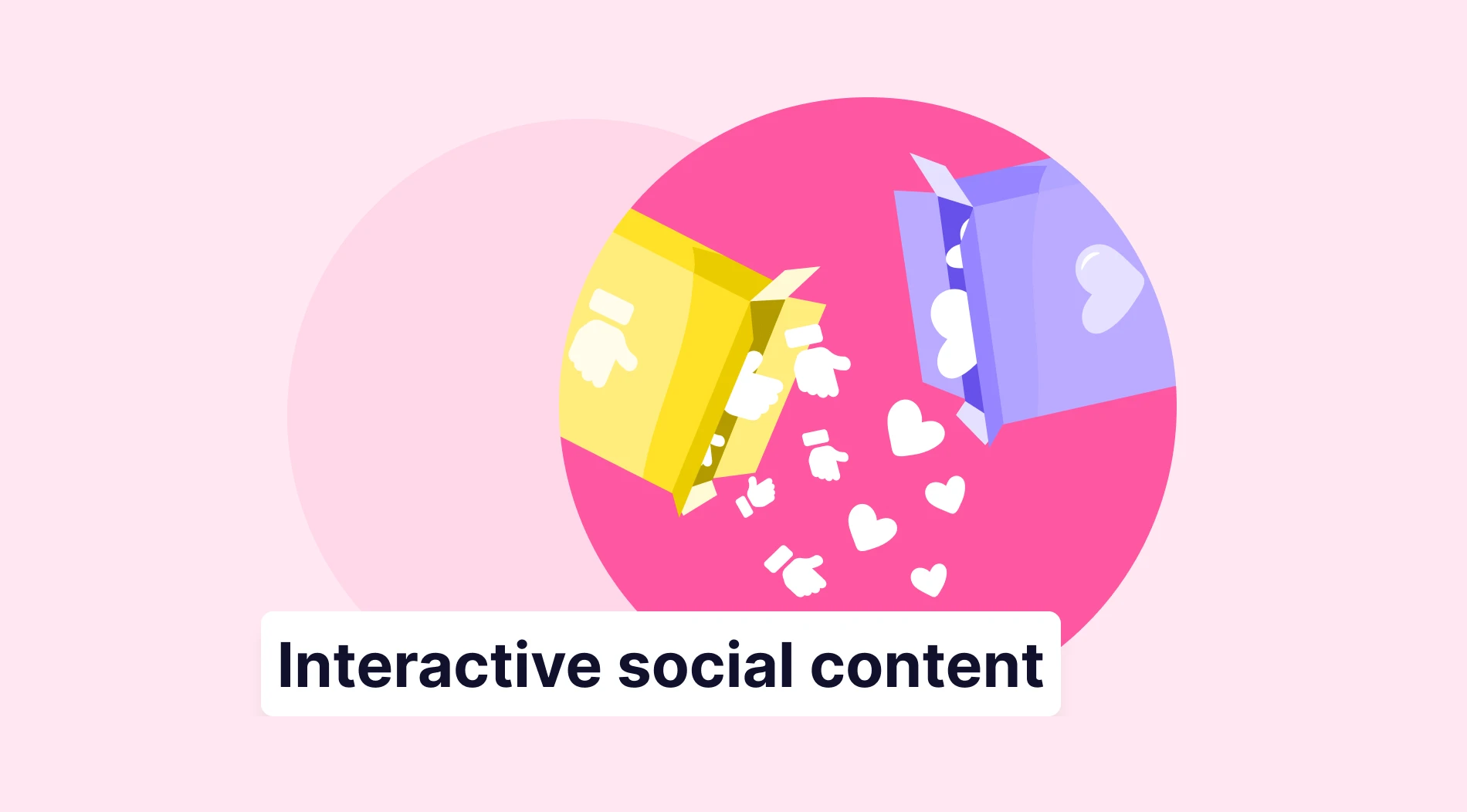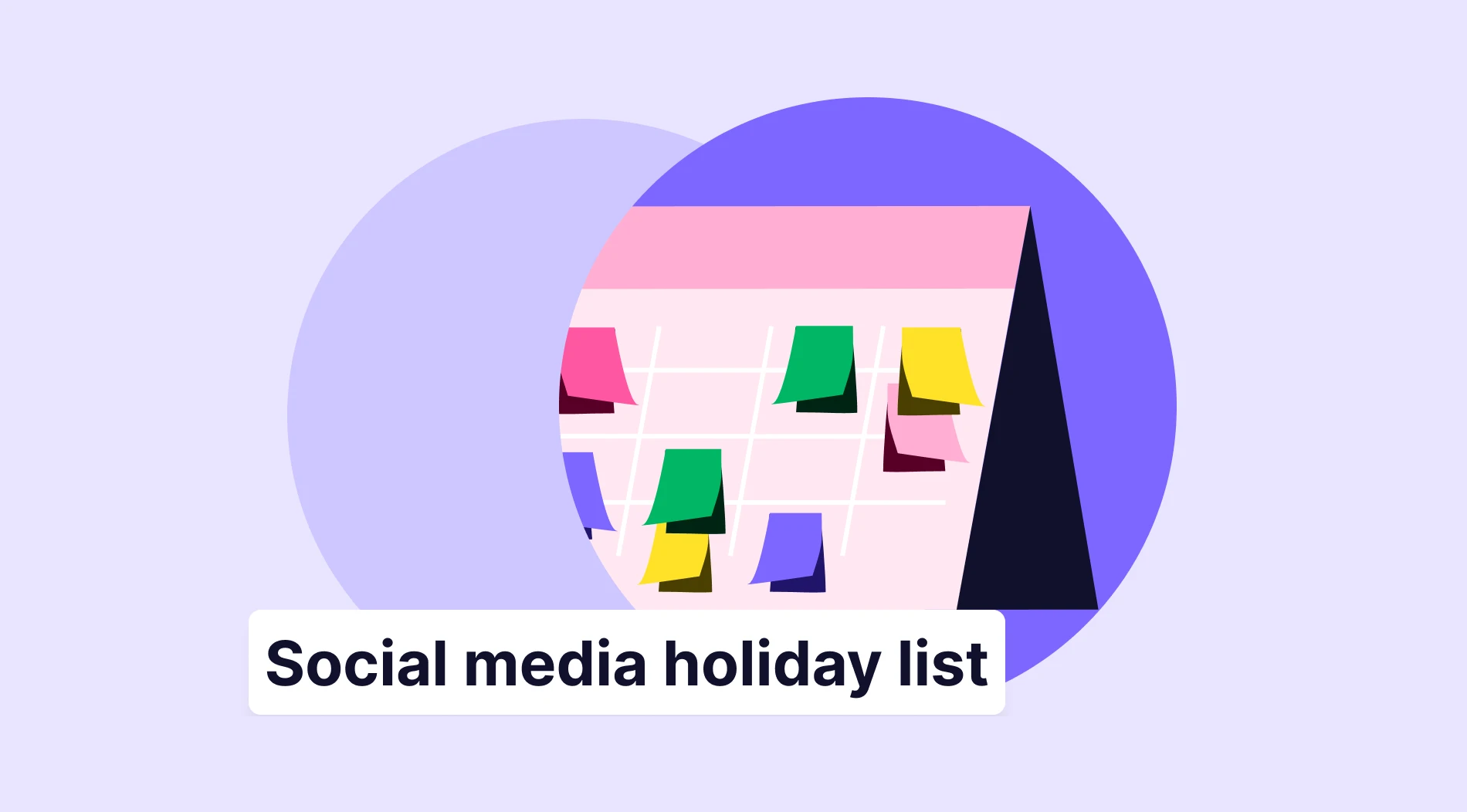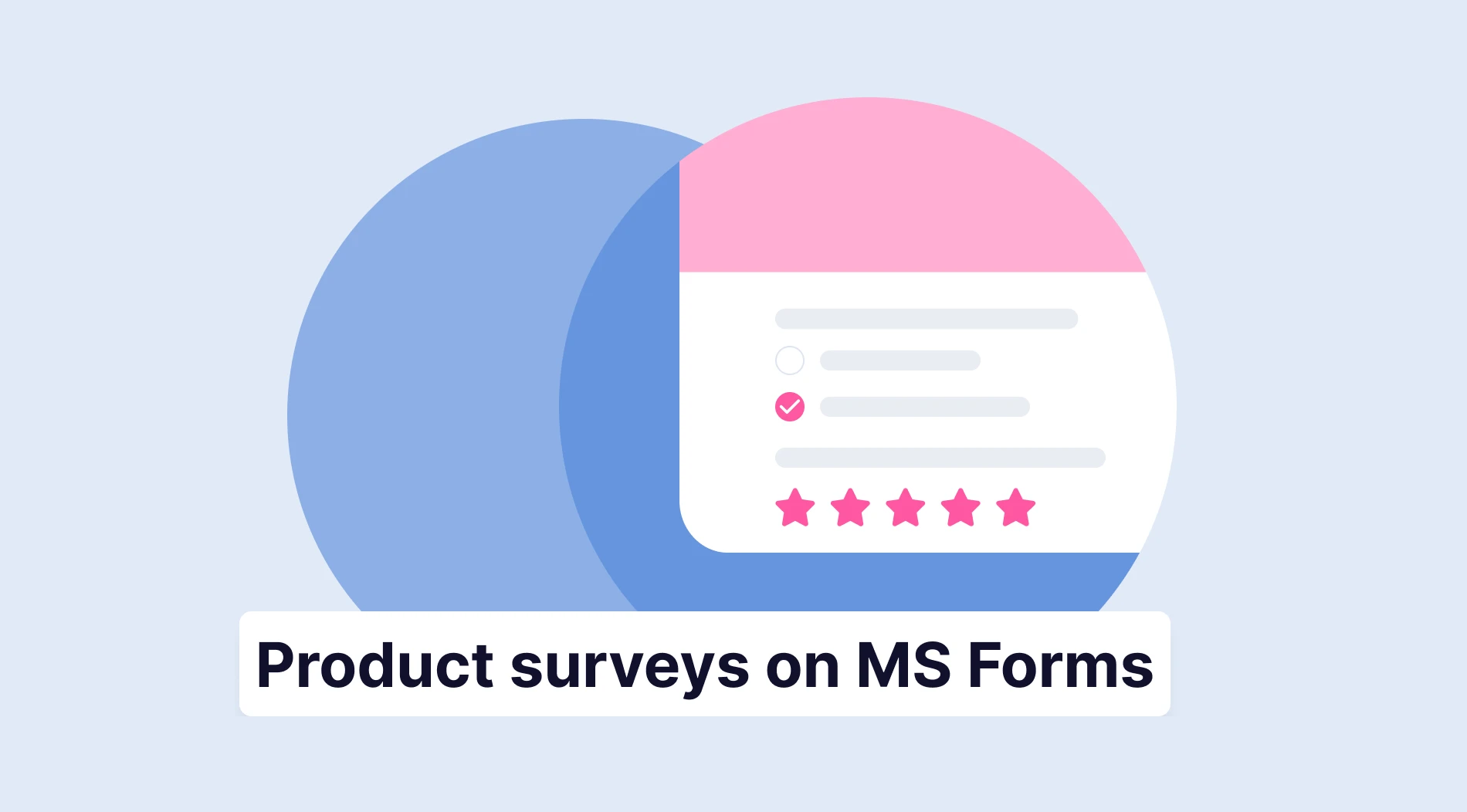Pricing models are vital for businesses because they directly influence profits, customer bases, and market positioning. Choosing the right model can make the difference between rapid growth and downsizing. In today’s competitive landscape, where customer expectations are higher than ever, the pricing strategy you choose can either attract a lot of users or drive them away.
Today, we will cover one of these pricing models, the freemium model. We’ll see how and when to use it. We’ll also look at some real-life examples of companies using this model. Additionally, we’ll discuss the advantages and drawbacks of freemium, along with practical tips to effectively use it. Finally, we will answer some frequently asked questions about the subject.
What is the freemium model?
The freemium model is a pricing strategy where a business offers a basic version of its product or service for free while offering premium features.
This advanced functionality approach allows users to experience the product without any financial commitment. This makes it attractive to more and more customers.
The goal at the end is to convert free users into paying customers by demonstrating the value of offerings. Freemium is especially common in software, gaming, and content-based industries. Companies like Spotify and LinkedIn have successfully used this model to grow their user base and generate revenue. By providing a free version, your business can attract a large number of users quickly.
How to use the freemium model
We have familiarized ourselves with the freemium concept. Now, let’s take a look at how to use it effectively. Here, we will offer the steps to follow when applying this model. Read each step carefully to see how you can use the freemium pricing model to attract more customers:
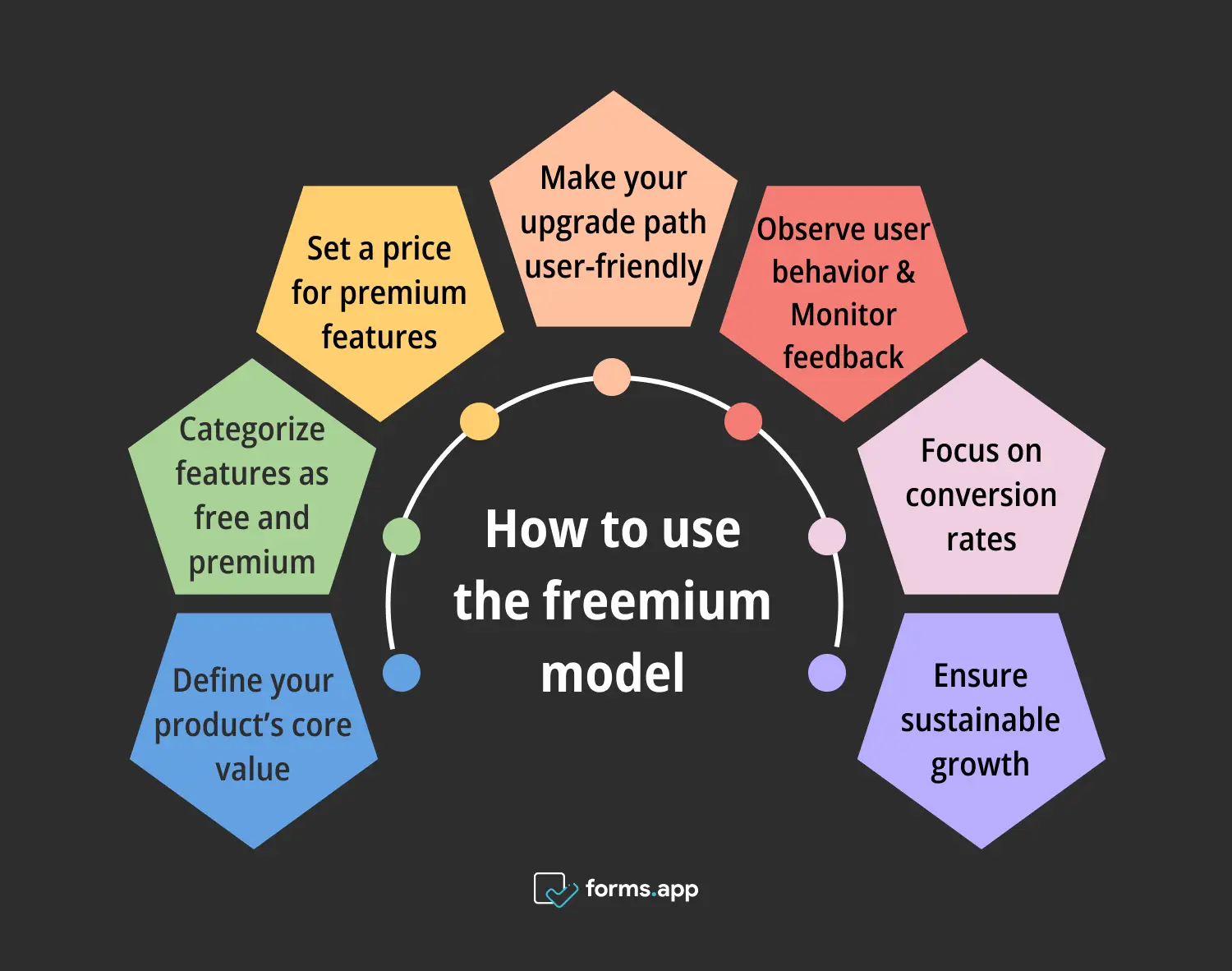
Steps to use the freemium model
1- Define your product’s core value
Firstly, identify the core value of your products/services. These core values will attract users to the free version. Make sure that this value is compelling enough for your prospective customers. They also should not be too extensive to overlook the importance of the premium features. Think about the essential features that most users will find useful. Offer these in your free version.
2- Categorize features as free and premium
Once you have identified the core value, the next step should be segmenting your product/service features into free and premium. The basic features should provide value and a satisfying user experience. The premium features, on the other hand, should be more advanced and enhance the free product’s functionality. Design the premium features desirable enough to encourage your users to update.
3- Set a price for premium features
After defining your features, you need to set the price for the premium tier. Your pricing should reflect the value of the additional features. It should also be competitive within your market. You should consider offering different levels of premium plans to address different user needs and budgets.
4- Make your upgrade path user-friendly
The process of upgrading from free to premium should be simple and user-friendly. Freemium users should not encounter technical difficulties or be confused about an upgrade. Use in-app purchases or a simple payment process on your website. Ensure that the upgrade path is clear and your users understand the benefits they will receive if they choose the premium version.
5- Observe user behavior & Monitor feedback
You should monitor how your users interact with the free and premium versions of your product. Pay attention to user feedback. It can provide valuable insights into what is good and what is not. Use this insight to enhance your product, improve user experience, and make adjustments to your freemium strategy.
6- Focus on conversion rates
If you want to maximize your success from the freemium model, optimize your conversion rates. This means understanding when and why users are upgrading. You should also find ways to encourage more free users to convert to premium. You can use strategies like targeted marketing campaigns or personalized offers.
7 - Ensure sustainable growth
Finally, make sure that your freemium model is sustainable in the long term. This means you should balance the costs of serving free users with the revenue from premium subscribers. As your user base grows, it is important to optimize your infrastructure and customer support accordingly. Sustainable growth requires careful, constant support for both the free and premium aspects of your product/service.
When to use the freemium model?
As for the other strategies and tools, the freemium model also has suitable environments. Let’s take a look at different business contexts where you can apply the freemium model. Understanding these venues will help you follow the steps above more easily in your business and try them in other industries/sectors.
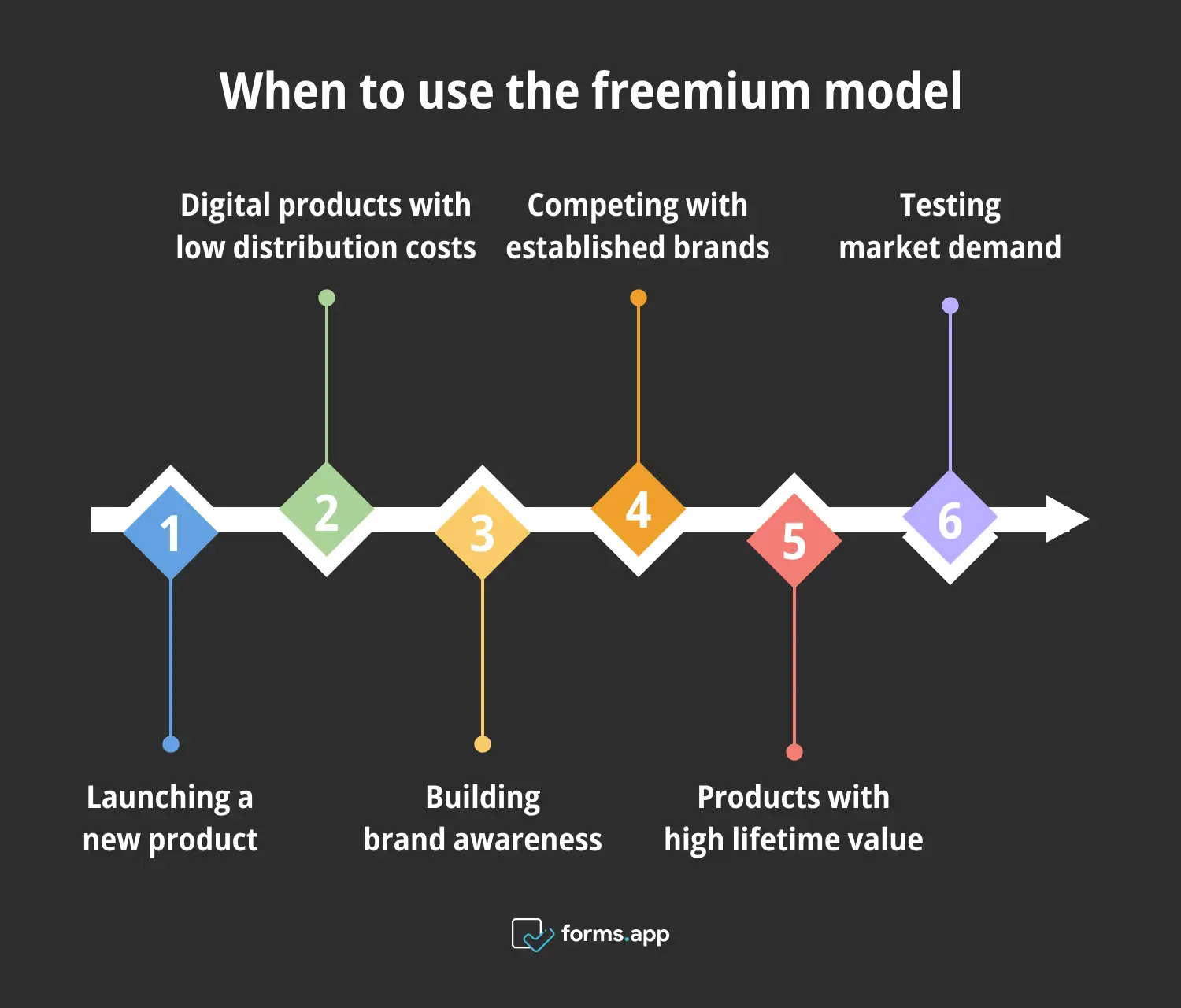
Right times to use the freemium model
1- Launching a new product
Using the freemium model is ideal when launching a new product, especially in a competitive market. You can offer a free version to attract early adopters and then build a user base quickly. This strategy allows potential customers to experience your product without any financial commitment.
2- Digital products with low distribution costs
The freemium model works best for digital products with low distribution costs. These include software, mobile apps, or online services. These services are easy to distribute to a large number of users at minimal cost. Since there is no physical inventory, you can support a large user base without a significant financial burden.
3- Building brand awareness
If your goal is to build brand awareness, the freemium is your model. You can reach a wider audience and increase your brand’s visibility. As more users try your product and share their experiences (word of mouth), it will gain credibility and recognition in the market. This exposure will ultimately help you stand out from competitors and establish a strong market presence.
4- Competing with established brands
If you are entering a market dominated by established brands, the freemium model can give you a competitive edge. By offering a free version of your product, you can attract users preferring the well-known brand. This strategy allows you to show the value of your product/service without requiring users to switch immediately. Over time, the users will see the benefits of your product.
5- Products with high lifetime value
The freemium model is particularly effective for products with a high customer lifetime value (CLTV). If your product has the potential to generate significant revenue from each customer over time, it’s worth investing in the freemium approach. By doing this, you can attract users who might eventually convert to paying customers. Once they upgrade, the long-term revenue will compensate for the initial cost.
6- Testing market demand
Using the freemium model is a great way to test market demand for a new product or feature. By offering a free version, you can attract user interest and gather data on how they receive your product. This approach allows you to make informed decisions about whether to invest further in the premium version.
Good examples of the freemium model
Having seen the suitable contexts for using this model, now you have an idea about when and how to use it. Now, let’s look at some examples of freemium business models. Here, we will explore well-known companies using and succeeding in the freemium model today:
1- Spotify
Spotify is one of the most successful examples of the freemium model. It offers a free version with ads and limited features. Its premium version provides ad-free listening, offline access, and higher audio quality. This model allows Spotify to attract millions of users.
Many of these users eventually upgrade to the premium version for a better experience. The clear value proposition of premium features and the user-friendly upgrade path have made Spotify a leader in the music streaming industry.
2- LinkedIn
LinkedIn uses the freemium model to offer a basic social networking service for professionals, with the option to upgrade to LinkedIn Premium. The free version allows users to create profiles, connect with others, and search for jobs.
The premium version, on the other hand, offers additional features. These include advanced search filters, the ability to see who viewed your profile, and access to LinkedIn Learning courses. This model has helped LinkedIn build a large user base while generating significant revenue from premium subscribers.
3- Dropbox
Dropbox offers a free version of its cloud storage service with limited storage space. Its paid version provides additional storage, advanced sharing options, and enhanced security features. This freemium approach has allowed Dropbox to attract a wide range of users, from individuals to businesses.
The integration and ease of use in the free version encourage users to store their files. The need for more storage or features often leads to upgrades. Dropbox’s success with this model demonstrates the effective application of the freemium strategy.
Freemium vs. Free trial
People often confuse the concepts “freemium” and “free trial” with one another. In this part of the article, we will compare these models. We will also outline their approaches, benefits, and pitfalls. Understanding the difference will enable you to use the freemium model properly.
Definition
The Freemium model allows users to access a basic version of a product for free, with the option to upgrade to a premium version for additional features. However, the free trial offers users full access to a product’s premium features only for a limited time. After the trial period ends, users must decide whether to purchase the product.
Access and Conversion
The freemium model allows users to access a basic version of a product indefinitely. This ongoing access can attract a large user base, although it may take time to convert free users into paying customers. In contrast, the free trial model offers full access to premium features but only for a limited time. This may create a sense of urgency and have a negative impact.
8 Expert tips for the freemium model
If you want to use the freemium model successfully, it requires strategic planning and thoughtful execution. By following the eight expert tips below, you can maximize conversion and enhance user satisfaction. You can also create a sustainable business model.
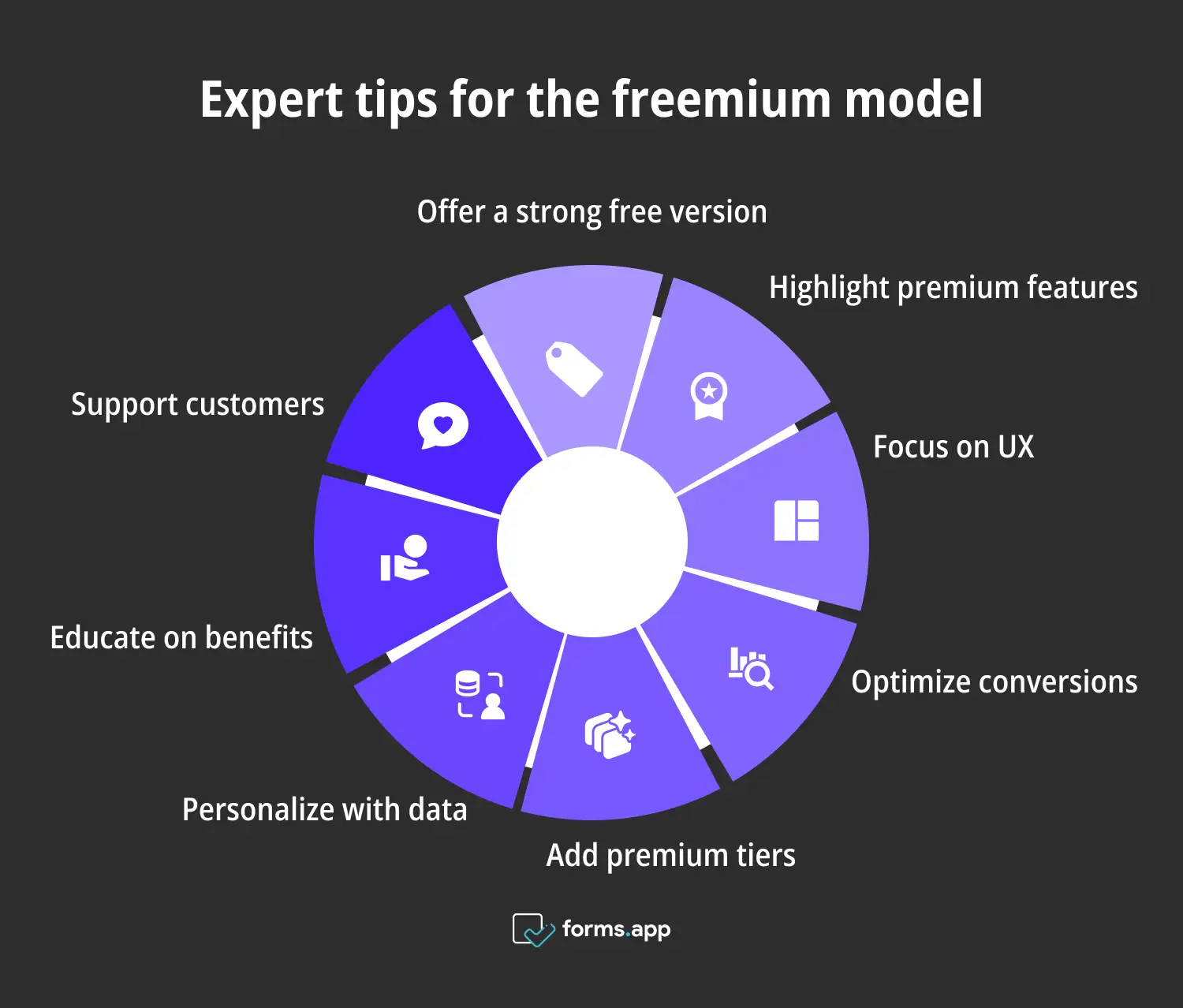
Pro tips for the freemium model
1- Start with a strong free version
Ensure that your free version offers real value to users. It should provide enough functionality to satisfy their needs while also encouraging them to explore the premium features. A strong free version can help you build trust with users and establish a positive brand reputation.
However, be careful not to give away too much for free, as this can reduce the incentive to upgrade. You need to find the balance between free and premium offerings. This is the key to the success of the freemium model.
2- Separate premium features
Make sure that you clearly separate the premium features from the free version. Users should understand exactly what they are getting with the premium version and why it is worth the cost. Highlight the benefits of upgrading, such as enhanced functionality, better performance, or exclusive content.
Use clear messaging to communicate the value of the premium features, and consider offering a free trial to give users a taste of what they are missing. This can increase the likelihood of conversion by demonstrating the value of the premium version.
3- Focus on user experience
Prioritize the user experience in both the free and premium versions of your product. A positive user experience can increase satisfaction and encourage users to explore more of what your product has to offer. Ensure that the free version is easy to use, with good navigation and design.
At the same time, make sure that the premium version offers an enhanced experience justifying the cost. If you focus on user experience, you can build a loyal customer base and increase the chances of conversion.
4- Monitor and Optimize conversion rates
Monitor your conversion rates and look for opportunities to optimize them. Analyze the behavior of both free and premium users to understand what drives the conversions. You should also look for where potential roadblocks may exist.
Use this data to refine your product. Adjust your pricing strategy or change your marketing messages. Small changes, such as improving the upgrade process or offering targeted promotions, can have a big impact on conversion rates. Testing and optimizing your approach can help you achieve better results over time.
5- Offer multiple premium tiers
Consider offering multiple premium tiers to cater to different user needs and budgets. By providing a range of options, you can appeal to a wide audience and increase the changes of conversion.
For example, you might offer a basic paid plan with essential features, a mid-tier plan with additional functionality, and top-tier plan with more exclusive benefits. This tiered approach allows your users to choose the level of service that best fits their needs, making it easier for them to justify the cost of upgrading.
6- Leverage data for customization
Use data to personalize the user experience and customize your offers to individual users. By analyzing user behavior, preferences, and demographics, you can deliver targeted messages and recommendations that are more likely to address different customers.
For example, if a user frequently uses a particular feature in the free plan, you might highlight the premium features enhancing that functionality. Customization makes users feel valued. It also increases their engagement with your product and their likelihood of upgrading to the premium version.
7- Educate users about the benefits
Educate users about the benefits of upgrading to the premium version. Many users may not fully understand what they are missing or how the premium features can enhance their experience. Use tutorials, demos, and in-app messaging to show the value of the premium features.
Underline real-world use cases and success stories to demonstrate the impact of upgrading. Provide clear and compelling information. Thus, you can help users make informed decisions and increase the likelihood that they’ll choose to upgrade.
8- Provide customer support
Offer excellent customer support to both free and premium users. Responsive and helpful support can improve the overall user experience and build trust in your brand. Premium users should consider offering additional support options. These may include priority access to customer service or dedicated account managers.
This added value can enhance the worth of the premium version and encourage users to upgrade. Support and value your customers. This way, you can increase customer satisfaction and loyalty. It will ultimately lead to higher conversion rates.
Pros & Cons of the freemium model
We have explored many aspects of the freemium model. We have briefly touched upon the benefits and pitfalls of the freemium model. Here, we’ll see the specific pros and cons of this model. Understanding these advantages and disadvantages will help you consider what to do and what not to do while using the freemium model.
Advantages
👍🏻 Attracts a large user base: The freemium model’s greatest advantage is its ability to attract a large number of users quickly. By offering a free version, you remove the barrier to entry, making it easy for potential customers to try your product.
👍🏻 Generates brand awareness: Offering a free version of your product can significantly boost brand awareness. Users who might not be willing to pay upfront are more likely to try your product if it’s free, leading to greater exposure.
👍🏻 Provides revenue stream: While the free version attracts users, the premium version generates revenue, creating a sustainable business model. As users become more engaged with your product, they’re more likely to see the value in upgrading to access additional features.
👍🏻 Supports product improvement: A large user base provides valuable feedback that can help you improve your product. By monitoring how users interact with both the free and premium versions, you can identify areas that need enhancement.
👍🏻 Encourages customer loyalty: The freemium model can foster customer loyalty by allowing users to try your product at no cost. Once they’ve experienced the value of the free version, they’re more likely to trust your brand and consider upgrading.
👍🏻 Enables data collection: The freemium model allows you to collect valuable data on user behavior. By analyzing how users interact with your product, you can gain insights into what features they find most valuable, where they encounter challenges, and what motivates them to upgrade.
Disadvantages
👎🏻 High maintenance costs: One of the main drawbacks of the freemium model is the high cost of maintaining a large base of free users. Even though these users don’t generate direct revenue, they still require customer support, server resources, and ongoing updates.
👎🏻 Low conversion rates: Another challenge of the freemium model is achieving a high conversion rate from free to premium users. Many users may enjoy the free version without ever feeling the need to upgrade.
👎🏻 Potential brand devaluation: Offering a free version of your product can sometimes lead to brand devaluation. If users perceive the free version as low-quality or lacking in value, it can negatively impact their perception of the entire brand, including the premium offerings.
Frequently asked questions about the freemium model
Last but not least, let’s answer some of the most frequently asked questions about the freemium model. Understanding these answers will help you get a clearer comprehension of the subject and use the model effectively in your business:
The main benefit of the freemium model is its ability to attract a large user base quickly by offering a free version of your product. This can help you gain market share and build brand awareness. Users will become more engaged with your product, and some will upgrade to a paid version. This will provide a steady revenue stream.
To increase conversion rates, focus on optimizing the user experience. Clearly communicate the value of the advanced features. Personalize your marketing messages and make the upgrade process as smooth as possible. Analyze user behavior to identify opportunities for improvement and test different strategies to see what works best.
No, the freemium model is not suitable for all businesses. It works best for digital products with a broad appeal and low distribution costs. It is particularly useful for SAAS businesses (software as a service). Businesses that require high upfront costs or serve a niche market may struggle to sustain a large number of free users.
Conclusion
In conclusion, the freemium model is a powerful pricing strategy that can drive rapid growth and generate revenue for your business. By offering a free version of your product, you can attract a large user base, build brand awareness, and encourage customer loyalty. However, you need careful planning and dynamic optimization to successfully implement the freemium model.
In this article, we have explored the freemium meaning, when to use the model, steps for implementation, freemium model examples, and its advantages and drawbacks. We have also provided tips for maximizing effectiveness and answered some common queries about the subject. If you have a business offering a digital product, make sure it has freemium software!
Fatih is a content writer at forms.app and a translator specializing in many text domains, including medical, legal, and technical. He loves studying foreign languages. Fatih especially likes to create content about program management, organizational models, and planning tools.
